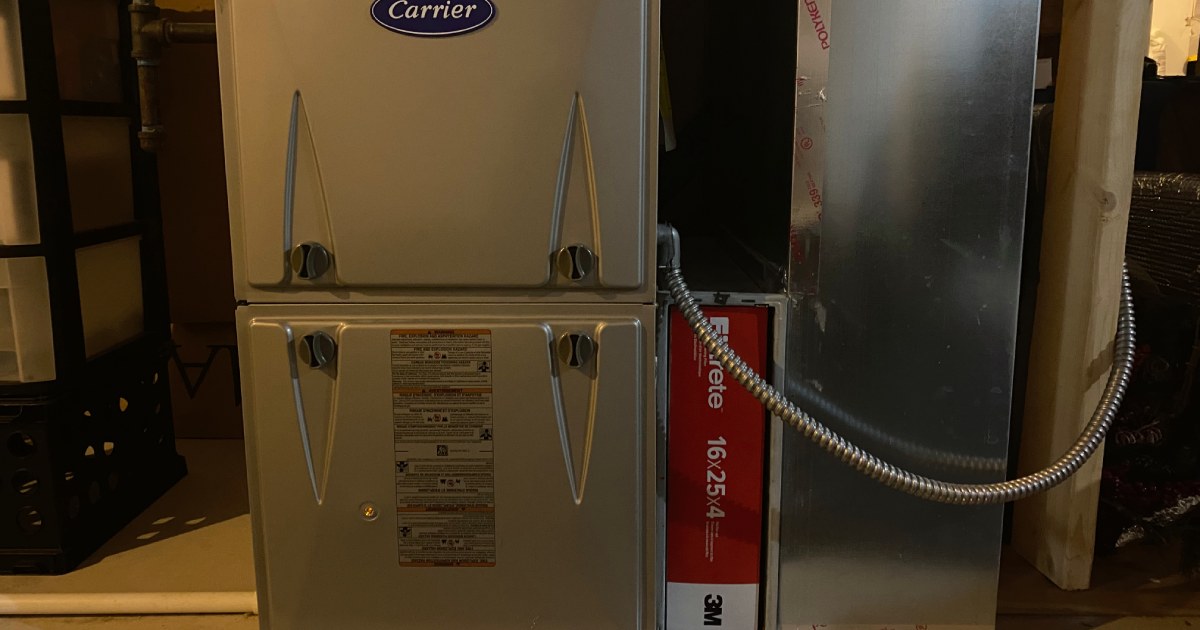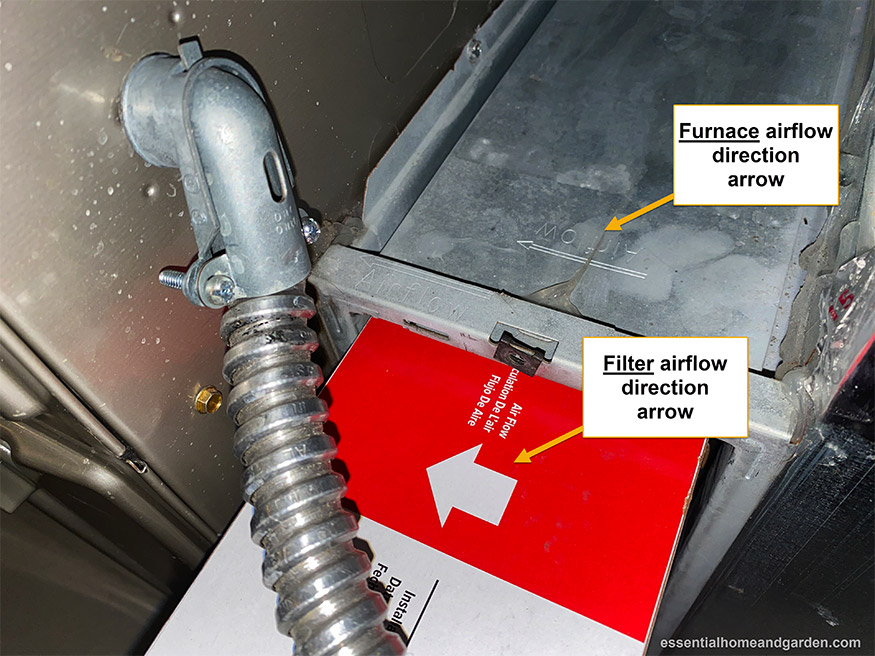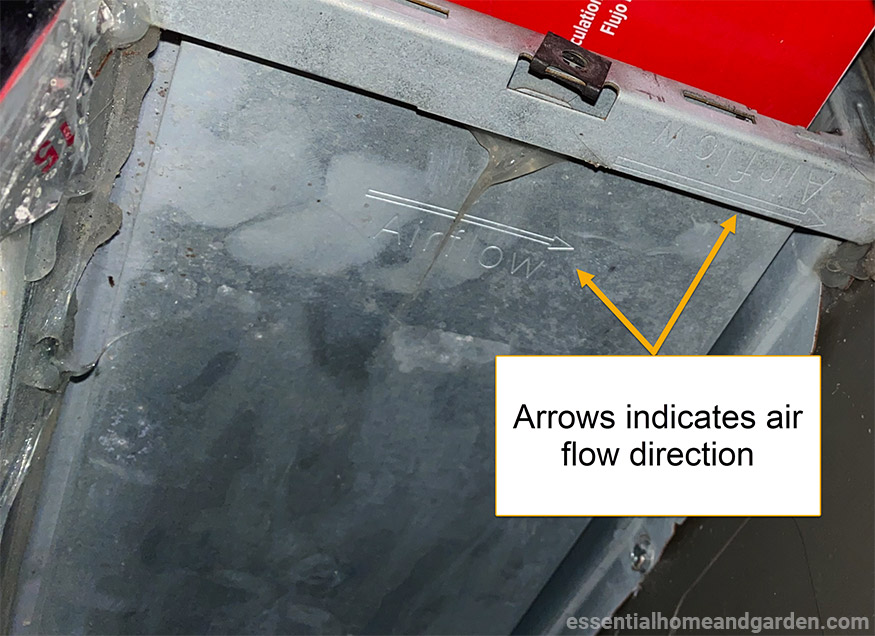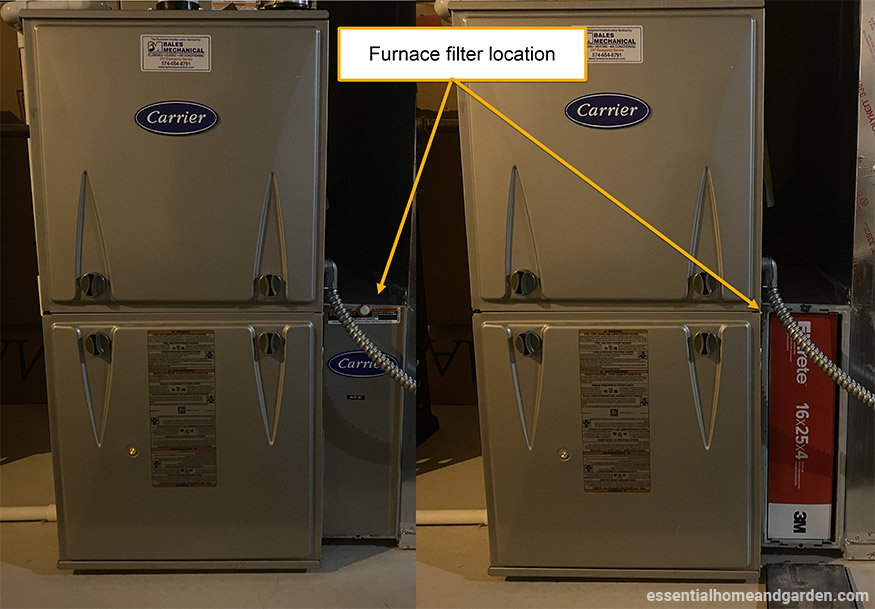Whether you live in a house or an apartment, changing the air filter is a necessary maintenance task because it improves indoor air quality, keeps the furnace running efficiently, and minimizes runny noses and teary eyes in your household.
While replacing your filter is entirely necessary, incorrectly installing it can lead to inefficient heating, furnace failures, and a high heating bill.
As such, you must install the filter in the correct orientation of the airflow. To learn how to install your air filter the right way, how to find the airflow direction in your furnace, why the direction matters, and how often you should replace your filter, continue reading this detailed guide!
Which Way Does the Furnace Filter Go In?
All furnace filters (or HVAC air filters) have arrows around the edge that point in the airflow’s direction in your air handler. You should always install the filter with the arrows pointing in the airflow direction.
The airflow direction of your air handler is also indicated with arrows on the outside of the filter housing. So, when installing your new filter, make sure the filter’s arrows are pointing in the same direction as the arrows on your gas furnace, as shown in the image above.
Info: All furnaces have arrows indicating the airflow direction.
What Happens if You Put Your Furnace Filter in Backwards?
If you put your HVAC filter in backward, there is a slight chance you will harm your furnace. It will reduce airflow, which puts strain on the HVAC equipment, dramatically reduces efficiency, and increases heating costs.
So, how do you know if you’ve put your furnace filter in backward?
Here are two signs:
- If you’re feeling chilled after replacing your furnace filter, you will notice that your furnace is running more than usual
- Your furnace is shutting off before reaching your thermostat’s setpoint (short cycling).
Short cycling is a safety feature; it shuts off the furnace to prevent damage from overheating. It usually doesn’t cause any lasting damage to your furnace, so you shouldn’t worry about it after correcting the filter orientation.
Info: When a backward filter blocks enough airflow, it will trap lots of heat inside the furnace. If the heat can’t escape into your home, it overheats the furnace and leads to short cycling.
Which Way Does the Airflow in My Furnace?
To determine the airflow direction in your furnace, all you have to do is look for an arrow on the side of it. Usually, furnaces have multiple arrows stamped into the metal near the filter housing.
The arrows point in the direction of the airflow. So, if it is pointing to the left, that means the air is moving from the right to the left.
If you can’t find an arrow on your furnace, look harder or determine the direction with your hand or a piece of paper.
To determine the airflow direction, if you don’t have an arrow indicating it, turn off your furnace (put the thermostat to “off”), turn the fan option from “auto” to “on,” then remove your filter.
Stick your hand or piece of paper into the filter opening to determine the airflow direction. You should feel the movement easily, but if not, use a thin sheet of paper– the air will push it in the direction it is flowing.
Which Way Should the Arrows Point on the Furnace Filter?
The arrows on your furnace filter should always point in the same direction as the airflow. If the air is flowing to the right, the air should point to the right.
To make things easier, just make sure the arrows on the air filter point in the same direction as the arrows on the air handler.
How to Install Your Furnace Filter
- Locate the filter slot. It is positioned adjacent to your furnace, where the main ductwork trunk connects to it.
The filter slot is typically vertical in orientation (but sometimes horizontal), and the filter inserts into the slot much like a chip-style credit card goes inside an ATM. Some filter slots will have a sheet metal cover that matches the ductwork; usually, it has thumbscrews for easy removal.
- Once you remove the cover and the old filter, grab the new filter and get ready to insert it. Orient the filter, so its airflow direction arrows match the airflow arrow direction on the filter slot and insert it.
Note: Filter slots are usually a “tight fit” for the air filter. HVAC manufacturers do this intentionally, so there is less air loss through any gaps.
As such, it may be difficult to squeeze your filter in the slot. Take your time and wiggle it back and forth if you’re having issues.
When Should You Change Your Furnace Filter?
The airflow direction is important when you replace your filter, so is changing it out at the proper intervals. How often you replace your filter depends on various factors, including:
- Filter thickness
- Filter type
- Amount of pollen in your area
- The amount of shedding pets in your home
- Indoor air quality in your home (burning candles, spraying aerosols, smoking, and cooking with fire will all clog a furnace filter faster)
- Filter rating
Note: However, the general rule of thumb amongst HVAC professionals is about one to four times a year. Thin filters (1-inch thick) may require replacement once a month, while thick 5-inch and 6-inch filters could last up to a year.
What Filter Rating Should You Get?
If you’re looking for a new furnace filter, you’ve probably seen MERV and HEPA filters. MERV 7 or 8 pleated filters are recommended for most residential HVAC systems.
However, many residential furnaces work with MERV ratings up to MERV 13, but not many. The higher the MERV rating, the more it filters. For example, MERV 8 filters trap up to 95% of particles as small as 5-microns.
Compared to MERV filters, HEPA filters trap a larger percentage of particles but are too dense to work with residential HVAC systems without damaging them.
If you want the highest level of filtration, choose the highest MERV rating that is compatible with your furnace. You can determine what MERV rating works with your furnace by looking at its manual, contacting the manufacturer, or consulting with an HVAC contractor.
How to Dispose of Your Old Furnace Filter
When you remove your old filter, be careful with it. The filter has collected many months’ worth of dust, dander, hair, and pathogens from the air in your home.
If you jostle it around when you remove it, a lot of these particles could float into the air and circulate through your home, which could also prematurely clog your new filter.
When removing an old air filter, you should place it directly into a trash bag and immediately seal it.
Correctly Replacing Filters is Important
When you replace the air filter in your furnace, ensure you insert it in the correct orientation. The filter slot on your furnace and the filter will both have arrows indicating the airflow direction.
When you insert the new filter, install it so its arrows point the same direction as the airflow arrows on the filter housing on the air handler. You can also use your hand to determine the airflow direction if needed.
Replacing your filter in the wrong way will reduce your furnace’s heating efficiency, reduce airflow, cause short cycling, increase your heating bill, and could cause equipment failure. Take your time and install it the right way the first time.



